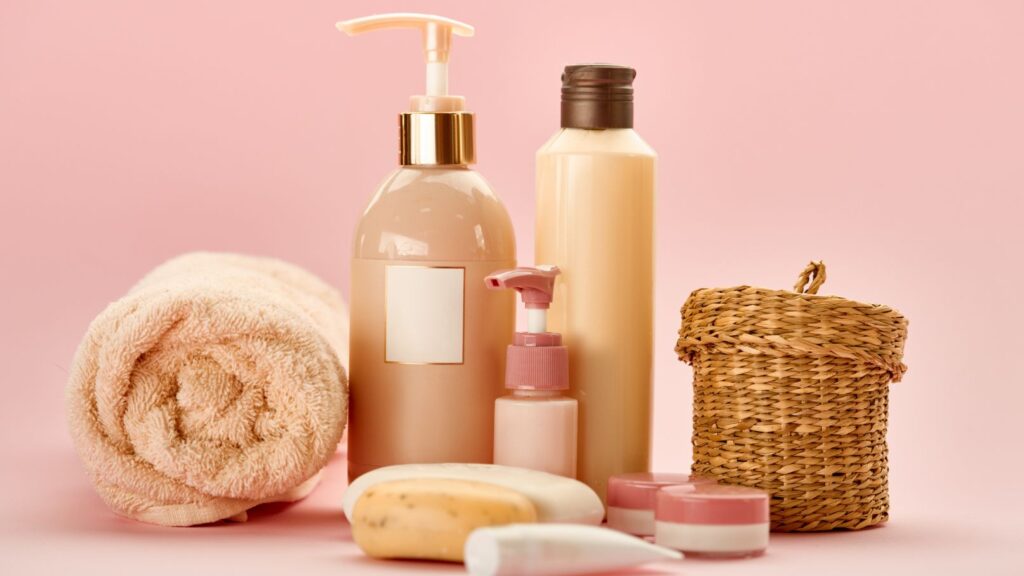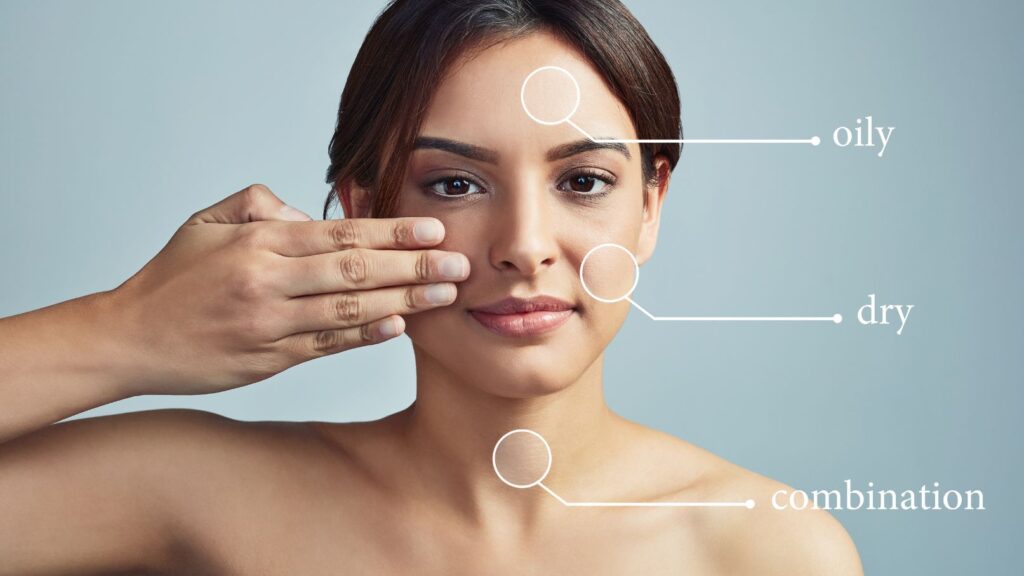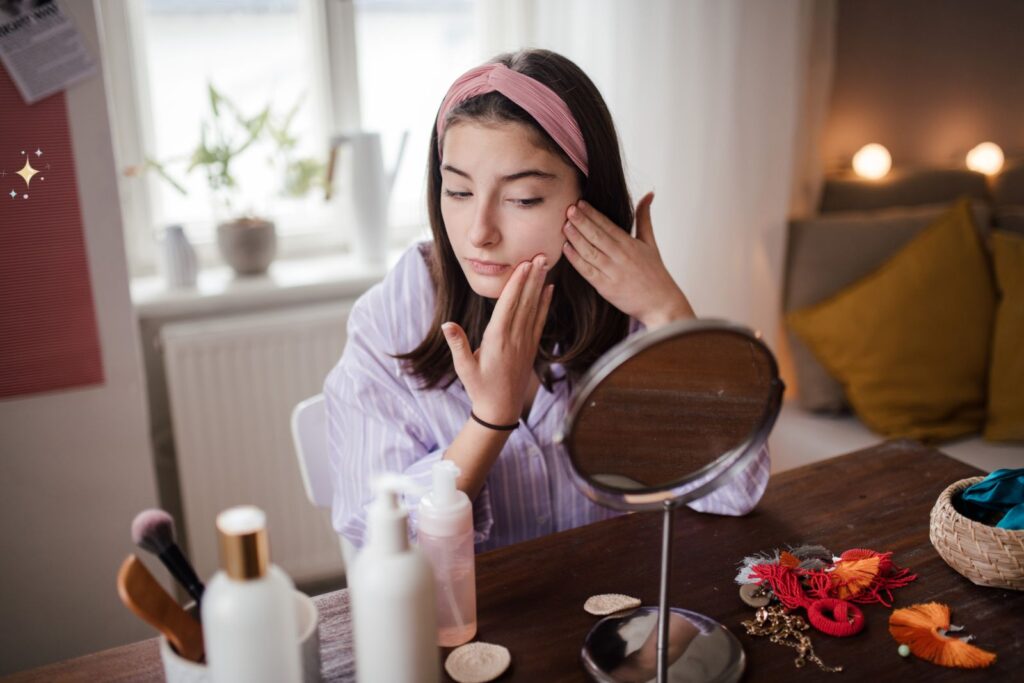Introduction:
Regarding skincare, we all want that radiant, glowing complexion. However, achieving and maintaining healthy skin requires understanding your skin type and choosing the right products and practices.
The Basics of Skin Care:
Cleansing
The foundation of any good skincare routine is cleansing, which helps remove dirt, excess oil, and impurities that accumulate on the skin throughout the day. Proper cleansing not only prepares your skin for the following steps in your routine but also helps prevent breakouts and other skin issues by keeping your pores clear and your skin balanced.
Choosing the Right Cleanser
Selecting the right cleanser for your skin type is crucial. If you have oily skin, use a foaming cleanser to remove excess oil. For dry skin, a hydrating cleanser is your best bet.
How Often Should You Cleanse
Most dermatologists recommend cleansing your face twice daily – once in the morning and once before bed. Over-cleansing can strip your skin of its natural oils, leading to dryness and irritation.
Toning:
Toning is a crucial yet often underestimated step in a skincare routine. It helps to remove any remaining impurities after cleansing, tightens pores, and restores the skin’s natural pH balance. A good toner also prepares your skin to better absorb moisturizers and serums, making your skincare products more effective..

Benefits of Toner
A good toner is an essential step in any skincare routine. It helps balance your skin’s pH levels, ensuring that your skin is neither too oily nor too dry. By removing any remaining impurities after cleansing, a toner prepares your skin to fully absorb the benefits of your serums and moisturizers. Incorporating a toner into your daily skincare routine can enhance your skin’s overall texture and appearance, leaving it feeling refreshed and revitalized. Choose a toner that suits your skin type for optimal results.
How to Use Toner.
Apply toner using a cotton pad, gently swiping it over your face. Avoid areas around the eyes and mouth.
Moisturizing:
Keeping your skin hydrated is essential for maintaining its elasticity and smoothness. Hydration helps to plump the skin, reducing the appearance of fine lines and wrinkles while also enhancing its natural barrier function to protect against environmental damage. Proper moisture levels are key to achieving a healthy, glowing complexion. https://youtu.be/JRIKEn_i2tU?si=kowOxZ81AB1MdZpq

Different Types of Moisturizers
From gels to creams to lotions, the type of moisturizer you use should align with your skin type. Gel moisturizers are great for oily skin, while creams are better suited for dry skin.
When and How to Moisturize
Moisturize immediately after cleansing and toning, while your skin is still damp, to lock in moisture.
To maximize hydration, it’s essential to moisturize immediately after cleansing and toning, while your skin is still damp. This helps to lock in moisture and ensures that your skin stays soft and hydrated throughout the day. Applying moisturizer to damp skin allows for better absorption of the product, enhancing its effectiveness. Incorporating this step into your skincare routine can make a noticeable difference in the overall texture and appearance of your skin, leaving it plump and radiant.
Advanced Skin Care Tips:
Exfoliation
Exfoliating helps to remove dead skin cells from the surface of your skin, which promotes faster cell turnover. This process reveals fresher, newer skin underneath, resulting in a brighter and more radiant complexion. Regular exfoliation also helps other skincare products penetrate better, enhancing their effectiveness.
Chemical vs. Physical Exfoliation
Chemical exfoliants, like AHAs and BHAs, dissolve dead skin cells, while physical exfoliants use small particles to scrub them away. Choose the method that suits your skin’s sensitivity
Best Practices for Exfoliating
Limit exfoliation to 2-3 times a week to avoid irritation. Be gentle, and always follow up with a moisturizer
Serums and Treatments:
Serums are powerful, concentrated treatments designed to address specific skin concerns, such as wrinkles, dark spots, or dehydration. They contain active ingredients in higher concentrations than regular moisturizers, allowing them to penetrate deeper into the skin and deliver more targeted benefits.
Popular Serums and Their Benefits
Vitamin C serums brighten the skin, while hyaluronic acid serums provide intense hydration. Retinol serums help with anti-aging by promoting cell turnover.
Incorporating Treatments into Your Routine:
Apply serums after toning and before moisturizing. Use treatments like masks and peels as needed, typically once a week.For an effective skincare routine, apply serums right after toning and before moisturizing.
Serums are packed with concentrated ingredients that target specific skin concerns, and applying them before your moisturizer ensures they penetrate deeply into the skin. Treatments like masks and peels should be used as needed, typically once a week, to address issues like dullness, uneven texture, or clogged pores. Incorporating these treatments into your routine can enhance your skin’s overall health and give it that extra boost for a glowing complexion.
Sun Protection:
Sun protection is absolutely essential for maintaining healthy skin. It shields your skin from harmful UV rays, which can cause premature aging, sunburn, and increase the risk of skin cancer. Consistent use of sunscreen helps to prevent these issues and keeps your skin looking youthful and healthy.

Why SPF is Essential
UV rays can lead to premature aging, sunburn, and significantly increase the risk of skin cancer. It’s essential to use SPF daily, regardless of the weather, as UV rays can penetrate through clouds and still cause damage to your skin. Regular sun protection helps maintain a youthful appearance and reduces the long-term risks associated with sun exposure

Best Sunscreens for Daily Use
Look for broad-spectrum sunscreens with at least SPF 50. Mineral sunscreens with zinc oxide or titanium dioxide are great for sensitive skin

Skin Care for Different Skin Types:
Dry Skin:
Skincare of Dry skin requires extra hydration and a gentle approach to care. It needs moisturizing products that deeply nourish and help maintain the skin’s natural barrier to prevent moisture loss. Using mild, non-irritating products ensures that the skin stays soft, smooth, and well-protected from environmental stressors.
Key Ingredients to Look For
Ingredients like hyaluronic acid, glycerin, and ceramides are excellent for retaining moisture and repairing the skin barrier. Hyaluronic acid attracts and holds water, providing deep hydration. Glycerin helps draw moisture into the skin and keeps it hydrated. Ceramides strengthen the skin’s natural barrier, preventing moisture loss and protecting against environmental irritants. Incorporating these ingredients into your skincare routine can enhance moisture retention and support overall skin health.

Daily Routine Tips:
Use a gentle, creamy cleanser to avoid stripping your skin of its natural oils. Steer clear of hot showers, as they can further dry out your skin. Instead, opt for lukewarm water and follow up with a thick, nourishing moisturizer twice daily to lock in hydration and keep your skin soft and supple.
Oily Skin:
Oily skin needs a careful balance to control excess oil production without causing dryness. It’s important to use products that regulate oil while maintaining moisture, avoiding harsh ingredients that can strip the skin and lead to more oil production as a response. Proper care keeps oily skin clear and healthy without over-drying.

Oily skin requires a careful balance to manage excess oil production without causing dryness. It’s crucial to use skincare products that effectively regulate oil while still maintaining the skin’s moisture levels. Harsh ingredients that strip the skin can trigger it to produce even more oil as a defense mechanism, leading to a cycle of overproduction. By choosing gentle, oil-controlling products and avoiding overly drying treatments, you can keep oily skin clear, healthy, and balanced without compromising its natural moisture. Proper care ensures that your skin stays fresh and less prone to breakouts.
Controlling Excess Oil
Skincare for oily and acne-prone skin, using oil-free, non-comedogenic products is essential to avoid clogging pores and exacerbating breakouts. Look for cleansers and moisturizers specifically labeled as non-comedogenic. Salicylic acid is a key ingredient that helps control excess oil and reduce acne by exfoliating dead skin cells and clearing out clogged pores. Additionally, incorporating a gentle exfoliating scrub or mask into your routine can help keep your skin smooth and prevent buildup. Always remember to follow up with a lightweight, oil-free sunscreen to protect your skin from UV damage without adding extra oil.

Suitable Products
For managing oily skin, gel-based cleansers and light, oil-free moisturizers are highly effective. Gel-based cleansers are excellent at removing excess oil and impurities without leaving a greasy residue. Look for products with keywords like “oil-control,” “matte finish,” and “clarifying” to ensure they suit oily skin. For moisturizing, opt for light, oil-free options that are “non-comedogenic,” “hydrating,” and “balancing.” These products help maintain moisture levels without clogging pores or exacerbating oiliness. Incorporating these into your skincare routine can significantly improve skin clarity and reduce the likelihood of breakouts.

Combination Skin:
Combination skin requires a balanced skincare routine to address both dry and oily areas effectively. Use a gentle cleanser that cleans without over-drying, and consider a hydrating toner to maintain moisture balance.
Apply a lightweight, oil-free moisturizer to hydrate the oily zones while using a richer cream or hydrating serum on drier areas. Incorporate targeted treatments like a salicylic acid-based product for oily patches and a nourishing mask for dry spots. By addressing the unique needs of each area, you can achieve a harmonious complexion.
Balancing Dry and Oily Areas
Use different products for various areas of your skin—lighter moisturizers for oily zones and richer creams for dry patches. This targeted approach ensures that each area receives the appropriate level of hydration and care. Lighter moisturizers help control excess oil and shine, while richer creams provide essential moisture and nourishment to dry spots, maintaining a balanced and healthy complexion.

Recommended Routine
For combination skin, focus on balancing products to effectively manage both oily and dry areas. Use hydrating gels for the oily zones to control excess shine while providing light moisture. For the drier spots, opt for creamy moisturizers that offer richer hydration. This approach ensures that both areas receive the appropriate care they need, helping to maintain an even and balanced complexion
Sensitive Skin:
Sensitive skin requires gentle, soothing products to prevent irritation. Choose formulas that are fragrance-free and contain calming ingredients such as aloe vera, chamomile, or oatmeal. Opt for hypoallergenic and non-irritating products to minimize the risk of reactions. Avoid harsh exfoliants and opt for mild, hydrating cleansers to maintain skin comfort and stability. By using gentle, soothing products, you can help keep sensitive skin calm and healthy.

Avoiding Irritants
For sensitive skin, avoid products containing alcohol, fragrances, and harsh chemicals. These ingredients can irritate and exacerbate sensitivity. Instead, choose products with soothing and hydrating ingredients, and always check labels for potential irritants. Gentle, natural formulas are typically better suited for maintaining skin comfort and reducing the risk of reactions.
Soothing Ingredients
Look for calming ingredients like aloe vera, chamomile, and oat extract. When selecting skincare products, look for calming ingredients like aloe vera, chamomile, and oat extract. These natural ingredients are known for their soothing properties, helping to reduce irritation, redness, and inflammation.

Aloe vera provides hydration and has anti-inflammatory benefits, while chamomile calms sensitive skin.

Oat extract is gentle and nourishing, making it perfect for maintaining a balanced and healthy complexion. Incorporating these ingredients into your skincare routine can enhance skin comfort and promote a calm, refreshed appearance.

Common Skin Care Myths:
Myth 1: Natural Ingredients Are Always Safe
Natural doesn’t always mean safe. Some natural ingredients can still cause allergic reactions or irritation. It’s important to test new products on a small area of skin before full use, even if they are labeled as natural. Always check for potential allergens and be mindful of how your skin responds to ensure you’re using products that are both effective and safe for your specific needs.
Myth 2: You Only Need Sunscreen/ SUNBLOCK on Sunny Days
Many people assume that cloudy days mean they can skip sunscreen, but UV rays can penetrate through clouds and still cause skin damage. This makes wearing sunscreen an everyday necessity, regardless of the weather. Consistent use of sunscreen helps prevent premature aging, sunburns, and the risk of skin cancer. It’s important to choose a broad-spectrum sunscreen with at least SPF 30 and reapply it every few hours for optimal protection. Don’t forget to cover commonly missed areas like the ears, neck, and hands!
Myth 3: Expensive Products Are Always Better
When it comes to skincare, price doesn’t always equate to quality. Many affordable products offer effective ingredients and results comparable to, or even better than, their high-end counterparts. It’s crucial to focus on the formulation, ingredients, and how well a product suits your skin type rather than just the brand name or price tag. With the right research, you can build an effective skincare routine without breaking the bank.
Conclusion:
Healthy skin is achievable with the right routine and products tailored to your skin type. Consistency is key, as is understanding what your skin needs at different times of the day or year. By following these tips and debunking common skincare myths, you can maintain a glowing, healthy complexion. Remember, the best skincare regimen is one that is personalized to you and evolves as your skin’s needs change.
FAQs
What is the best way to determine my skin type?
Visit a dermatologist or perform a simple test at home by washing your face and observing how it feels after a few hours without applying any products.
How can I prevent acne breakouts?
Maintain a consistent cleansing routine, use non-comedogenic products, and avoid touching your face frequently.
Are anti-aging products necessary in your 20s?
Starting with basic anti-aging products like sunscreen and antioxidants in your 20s can help prevent premature aging.
How often should I exfoliate my skin?
Exfoliate 2-3 times a week, depending on your skin type and sensitivity.
What is the difference between a serum and a moisturizer?
Serums are lightweight and deliver concentrated ingredients deep into the skin, while moisturizers hydrate and protect the skin’s surface.



One Response